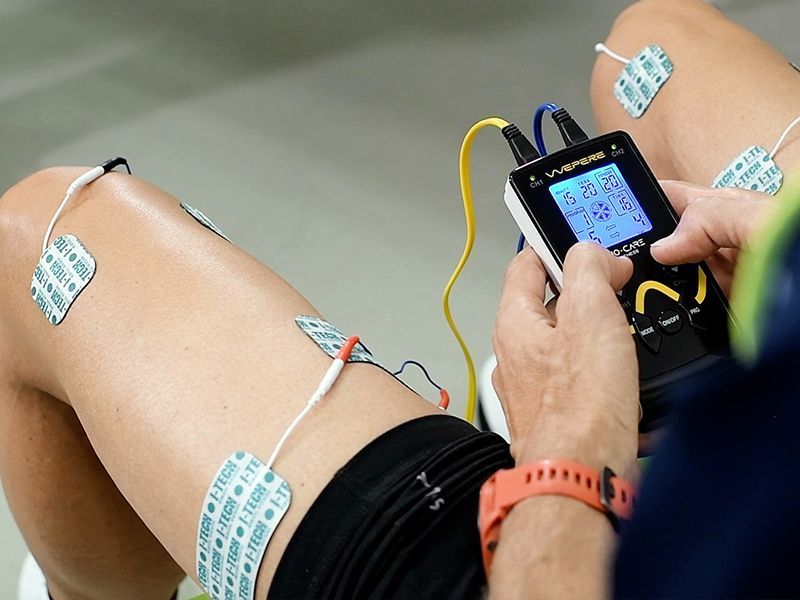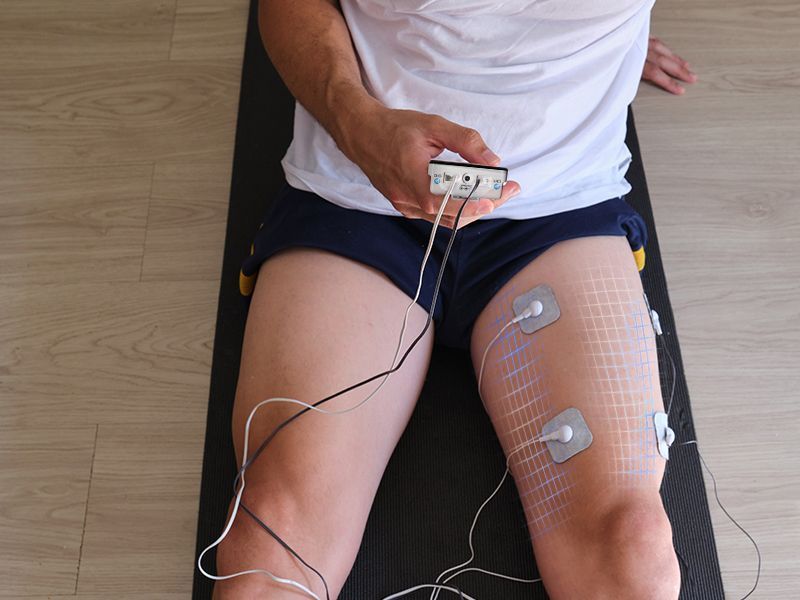When muscular contraction is voluntary, it follows a neurological pathway that starts from the motor cortex of the brain (Central Nervous System – CNS), where the movement originates; subsequently, the nerve impulse, through the efferent pathways (Peripheral Nervous System – SNP) reaches the muscular areas that are involved in the execution of the movement, which are thus activated.
In the case of electrostimulation, on the other hand, the induced electrical stimulus has a much shorter pathway, but one that triggers a muscular activation that is very similar in some respects to voluntary muscle activation, as it follows a physiological pathway.
Specifically, the induced electrical stimulus creates excitation, and thus activation, of the nervous system at the level of the motor plate, which is the connection point between the peripheral nervous system and the muscle.
This is an advantage because here, the electrical impulse activates electrochemical processes that induce muscle activation in a similar way to what would occur in the presence of a voluntary stimulus.

However, there are many differences between voluntary and induced activation: for example, from the point of view of the mechanical training effect on the stimulated muscle, the effectiveness of electrostimulation is very high compared to that of traditional training. Just as from the point of view of neuromotor co-ordination, an induced electrical stimulus, by its very nature, has a reduced effectiveness compared to a voluntary one.
Electrostimulation is a very valuable aid in strength training in its various aspects, due to its effectiveness and the fact that it acts indirectly on the muscle, creating a specific and very precise activation.
Actually, depending on certain characteristics of the electrical stimulus, the various programs are designed so as to selectively act on:
- different muscle areas;
- different characteristics of the stimulated muscle.
By adjusting the parameters that characterise the electrical stimulus, such as the frequency and the ratio between the duration of the work phase and the duration of the recovery phase, it is possible to set programs with a high level of specificity.
Each one is specifically designed to focus on a specific target and body area, which makes it possible to optimise the results and comfort of electrostimulation, making the technique easy to use even for amateur athletes or non-professionals.

